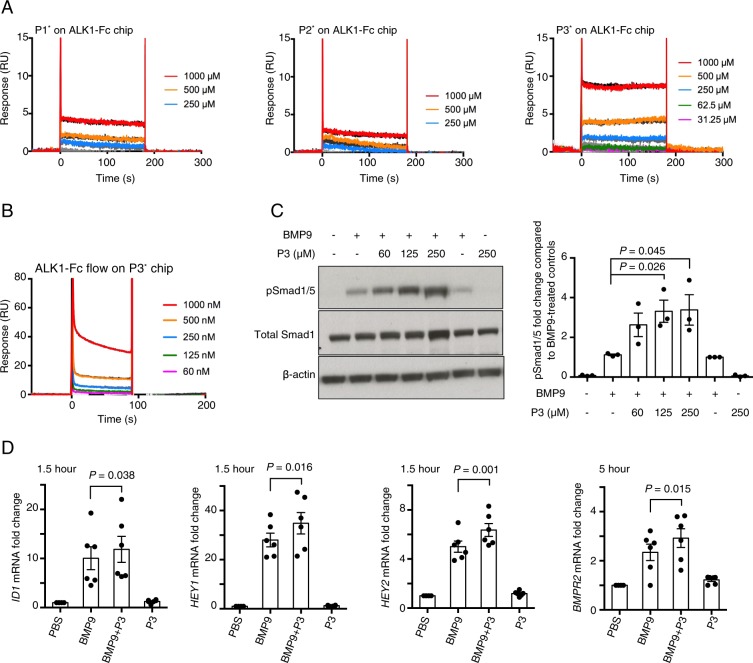Figure 2.
BMP9 peptide P3 is a potentiator for BMP9 signalling in PAECs. (A) SPR sensorgrams of peptide P1*, P2* and P3* binding to ALK1-Fc on CM5 chip. Raw data were fitted to steady state binding kinetics to obtain the KD values of 25M, 84.7 M and 2 mM for P1*, P2* and P3*, respectively. (B) SPR sensorgrams of ALK1-Fc binding to peptide P3* on SA chip. The steady state fit yielded a KD value of 30 mM. (C) Representative immunoblots against pSmad1/5, and total Smad1, of the protein extracts from PAECs that have been treated with BMP9 (at 0.03 ng/ml, or 1.24 pM growth factor domain (GFD) dimer) in the presence or absence of P3. Right: quantification of the pSmad1/5 bands by densitometry, N = 3. Paired t-test. (D) Effect of peptide P3 (at 160 μM) on BMP9 (at 0.3 ng/ml, or 12.4 pM GFD dimer)-induced gene expression of ID1, HEY1 and HEY2 following 1.5-hour treatment, or expression of BMPR2 following 5-hour treatment, in hPAECs. N = 6, data shown as means ± S.E., paired t-test.

